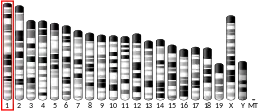| ADAM23 | |||||||||||||||||||||||||||||||||||||||||||||||||||
|---|---|---|---|---|---|---|---|---|---|---|---|---|---|---|---|---|---|---|---|---|---|---|---|---|---|---|---|---|---|---|---|---|---|---|---|---|---|---|---|---|---|---|---|---|---|---|---|---|---|---|---|
| Identifiers | |||||||||||||||||||||||||||||||||||||||||||||||||||
| Aliases | ADAM23, MDC-3, MDC3, ADAM metallopeptidase domain 23 | ||||||||||||||||||||||||||||||||||||||||||||||||||
| External IDs | OMIM: 603710 MGI: 1345162 HomoloGene: 2826 GeneCards: ADAM23 | ||||||||||||||||||||||||||||||||||||||||||||||||||
| |||||||||||||||||||||||||||||||||||||||||||||||||||
| |||||||||||||||||||||||||||||||||||||||||||||||||||
| |||||||||||||||||||||||||||||||||||||||||||||||||||
| |||||||||||||||||||||||||||||||||||||||||||||||||||
| |||||||||||||||||||||||||||||||||||||||||||||||||||
| Wikidata | |||||||||||||||||||||||||||||||||||||||||||||||||||
| |||||||||||||||||||||||||||||||||||||||||||||||||||
Disintegrin and metalloproteinase domain-containing protein 23 is a non-catalytic protein that in humans is encoded by the ADAM23 gene.[5][6] It is a member of the ADAM family of extracellular matrix metalloproteinases.
Function
This gene encodes a member of the ADAM (a disintegrin and metalloprotease domain) family. Members of this family are membrane-anchored proteins structurally related to snake venom disintegrins, and have been implicated in a variety of biological processes involving cell-cell and cell-matrix interactions, including fertilization, muscle development, and neurogenesis. This gene is highly expressed in the brain and may function as an integrin ligand in the brain.[6]
References
- 1 2 3 GRCh38: Ensembl release 89: ENSG00000114948 - Ensembl, May 2017
- 1 2 3 GRCm38: Ensembl release 89: ENSMUSG00000025964 - Ensembl, May 2017
- ↑ "Human PubMed Reference:". National Center for Biotechnology Information, U.S. National Library of Medicine.
- ↑ "Mouse PubMed Reference:". National Center for Biotechnology Information, U.S. National Library of Medicine.
- ↑ Sagane K, Ohya Y, Hasegawa Y, Tanaka I (Aug 1998). "Metalloproteinase-like, disintegrin-like, cysteine-rich proteins MDC2 and MDC3: novel human cellular disintegrins highly expressed in the brain". The Biochemical Journal. 334 ( Pt 1) (Pt 1): 93–8. doi:10.1042/bj3340093. PMC 1219666. PMID 9693107.
- 1 2 "Entrez Gene: ADAM23 ADAM metallopeptidase domain 23".
Further reading
- Roberts CM, Tani PH, Bridges LC, Laszik Z, Bowditch RD (Oct 1999). "MDC-L, a novel metalloprotease disintegrin cysteine-rich protein family member expressed by human lymphocytes". The Journal of Biological Chemistry. 274 (41): 29251–9. doi:10.1074/jbc.274.41.29251. PMID 10506182.
- Poindexter K, Nelson N, DuBose RF, Black RA, Cerretti DP (Sep 1999). "The identification of seven metalloproteinase-disintegrin (ADAM) genes from genomic libraries". Gene. 237 (1): 61–70. doi:10.1016/S0378-1119(99)00302-9. PMID 10524237.
- Cal S, Freije JM, López JM, Takada Y, López-Otín C (Apr 2000). "ADAM 23/MDC3, a human disintegrin that promotes cell adhesion via interaction with the alphavbeta3 integrin through an RGD-independent mechanism". Molecular Biology of the Cell. 11 (4): 1457–69. doi:10.1091/mbc.11.4.1457. PMC 14859. PMID 10749942.
- Sun YP, Deng KJ, Wang F, Zhang J, Huang X, Qiao S, Zhao S (Jan 2004). "Two novel isoforms of Adam23 expressed in the developmental process of mouse and human brains". Gene. 325: 171–8. doi:10.1016/j.gene.2003.10.012. PMID 14697522.
- Schmitt-Ulms G, Hansen K, Liu J, Cowdrey C, Yang J, DeArmond SJ, Cohen FE, Prusiner SB, Baldwin MA (Jun 2004). "Time-controlled transcardiac perfusion cross-linking for the study of protein interactions in complex tissues". Nature Biotechnology. 22 (6): 724–31. doi:10.1038/nbt969. PMID 15146195. S2CID 36630738.
- Brandenberger R, Wei H, Zhang S, Lei S, Murage J, Fisk GJ, Li Y, Xu C, Fang R, Guegler K, Rao MS, Mandalam R, Lebkowski J, Stanton LW (Jun 2004). "Transcriptome characterization elucidates signaling networks that control human ES cell growth and differentiation". Nature Biotechnology. 22 (6): 707–16. doi:10.1038/nbt971. PMID 15146197. S2CID 27764390.
- Costa FF, Colin C, Shinjo SM, Zanata SM, Marie SK, Sogayar MC, Camargo AA (Jun 2005). "ADAM23 methylation and expression analysis in brain tumors". Neuroscience Letters. 380 (3): 260–4. doi:10.1016/j.neulet.2005.01.050. PMID 15862898. S2CID 42504882.
- Tao WA, Wollscheid B, O'Brien R, Eng JK, Li XJ, Bodenmiller B, Watts JD, Hood L, Aebersold R (Aug 2005). "Quantitative phosphoproteome analysis using a dendrimer conjugation chemistry and tandem mass spectrometry". Nature Methods. 2 (8): 591–8. doi:10.1038/nmeth776. PMID 16094384. S2CID 20475874.
- Takada H, Imoto I, Tsuda H, Nakanishi Y, Ichikura T, Mochizuki H, Mitsufuji S, Hosoda F, Hirohashi S, Ohki M, Inazawa J (Dec 2005). "ADAM23, a possible tumor suppressor gene, is frequently silenced in gastric cancers by homozygous deletion or aberrant promoter hypermethylation". Oncogene. 24 (54): 8051–60. doi:10.1038/sj.onc.1208952. PMID 16103878.
External links
- The MEROPS online database for peptidases and their inhibitors: M12.979
- Human ADAM23 genome location and ADAM23 gene details page in the UCSC Genome Browser.
This article is issued from Wikipedia. The text is licensed under Creative Commons - Attribution - Sharealike. Additional terms may apply for the media files.




